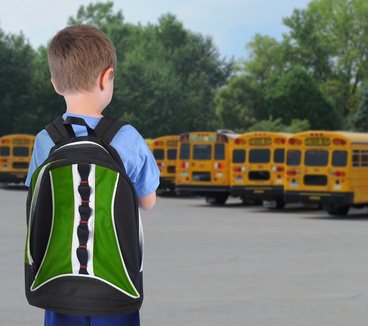Every year, there’s the week or two when the stomach bug hits, or strep throat makes the rounds. I remember an October a few years ago when Western New York had an excessive number of students with swine flu, including my son. The emergency room was like a war zone—parents were lying on the floor with their children, afraid to leave the room for fear they’d be called and skipped if not present. We wore facemasks. At one point, one of my eighth-grade classes had more students absent than present.
These episodes are classic school scenarios where everyone is patient with each other, and life gets back to normal after a week or so. But there are other types of absenteeism that are much more complicated: the problem of those students who refuse to come to school, as well as the children in developing nations who are not permitted to do so.
In my suburban experience, anxiety is the culprit many times when students just can’t go to school. Notice that I say can’t and not won’t. No one wants to be an outsider, and no one wants to hide at home. As students go through adolescence, school can become a breeding ground for judgmental looks, too much pressure to do well academically or in sports, and the complex development of relationships. I, too, can become anxious and overwhelmed, but I have the hindsight of experience to remind me that it is a cycle, nothing stays the same, and whatever is stressing me out will be over soon. I also have a circle of friends to confide in; thus, I am aware that I am not the only one who feels the way I do. Students, however, are so self-focused, which developmentally they can’t even help, that they believe (to the detriment of their sanity) they are alone in their feelings.
In thinking about this topic as a part of Attendance Awareness Month, I found an interesting resource that opened my eyes to some other aspects of absenteeism I hadn’t really considered. Share My Lesson contributor jmhallma, a specialist in school counseling, has a great resource called "School Refusal Behavior Chart.” It is a checklist that helps teachers and counselors categorize the reasons a student may refuse to go to school and best pinpoint the problems. For example, avoidance of school itself, pursuit of attention and tangible rewards outside of school are all subsets of the overriding issue.
Teachers can imagine that avoiding school itself can lead to absenteeism; however, I hadn’t put much thought into other reasons. But, the trickiest by far are actually the latter two—pursuit of attention and tangible rewards outside of school. When students have irregular attendance, they are smothered with attention when they return, frequently meeting with a counselor or school social worker.
Some students are actually rewarded when they skip school. For example, a parent might stay home from work and spend eight hours with a sick child. When the world is so busy, it is pretty easy to see how a clever child would use illness as a day pass to spend time with mom or dad. I once heard of a student whose mom would ask him to stay home to keep her company when she was sick. Teenagers are starved for attention and whether the attention comes from school or home, attendance is a powerful manipulation—whether conscious or subconscious. Knowing the reason for a student’s truancy is a first step in rectifying the situation.
For schools that want to improve student attendance, a good first step is to help kids recognize that getting an education is an amazing opportunity. To that end, there are two resources on the Share My Lesson website that introduce students to a global perspective. The Peace Corps’ World Wise Schools program offers “Ensuring Access to Quality Education.” The lesson requires investigation and reflection, as well as offering interactive Web elements. It is an excellent opportunity to incorporate technology and foster a worldview that is enlightening to students who take a free, equitable public education for granted.
The Share My Lesson social studies team’s “Let All the Children in the World Go to School” is the perfect first step for teachers and counselors who want to give students a broad overview of the world’s education deficits. The resource offers an array of staggering facts that students will find interesting. For example: 67 million students around the world do not attend school; 53 percent of them are girls.
This month, taking a few minutes to look at global school attendance might spark an interest in overriding societal problems. Social justice and equality go hand in hand with any discussion of schooling, promoting a worldview in students that is not limited to their own homeroom.











